 
|
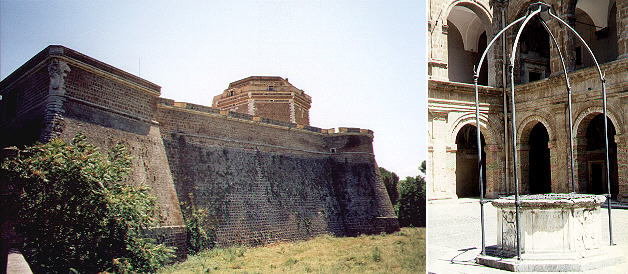 | ||
The fortress was used by the popes also as a prison. Other images can be seen in my page on the Fortresses of the Popes.
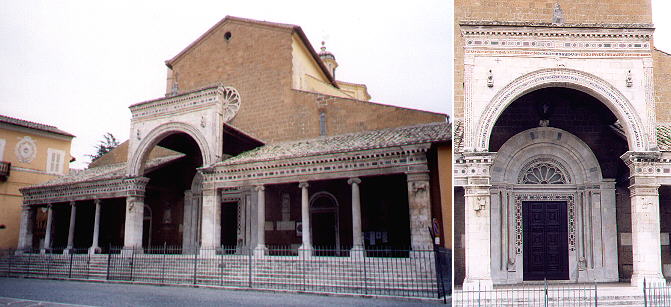 | ||
The Cathedral of Civita Castellana is the masterpiece of Jacopo di Lorenzo and his son Cosma who in 1210 built its fašade. A sort of triumphal arch separates two fine porticoes supported by elegant columns which were made for the occasion.
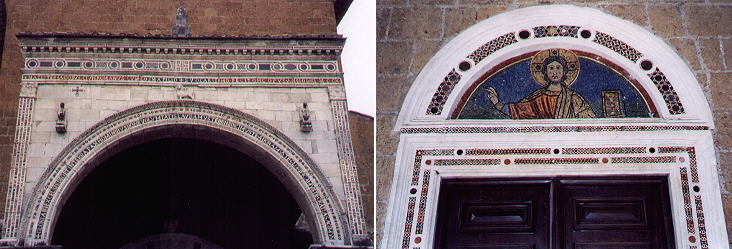 | ||
The decoration is a mixture of Early Christian and Byzantine elements combined in classical forms.
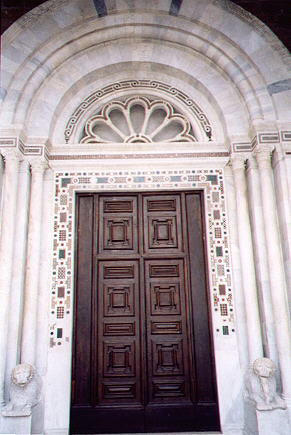 | ||
The entrance in the image here above shows also a shadow of Arab influence in the choice of black ad white marbles (an influence very visible in the Domes of Orvieto and Pisa).
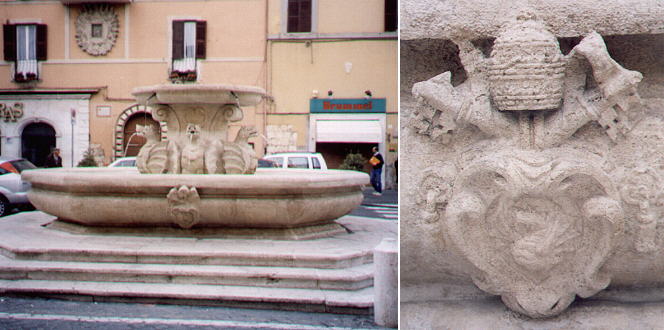 | ||
Civita Castellana was protected by walls built by Alexander VI. You can see their main gate in my page on Gates of the Popes. The main square of Civita Castellana was embellished by Gregorius XIII (1572-85) with a fountain decorated with his heraldic dragon.
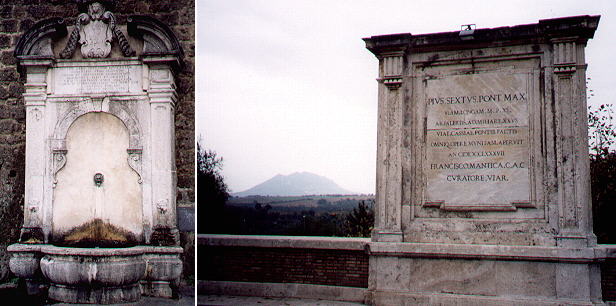 | ||
The XVIIIth century saw the move from Baroque to Neoclassic and the images here above show the move from rounded, complex lines to a more austere design. The isolated mountain shown near the inscription is Monte Soratte and it is clearly visible also from Rome.
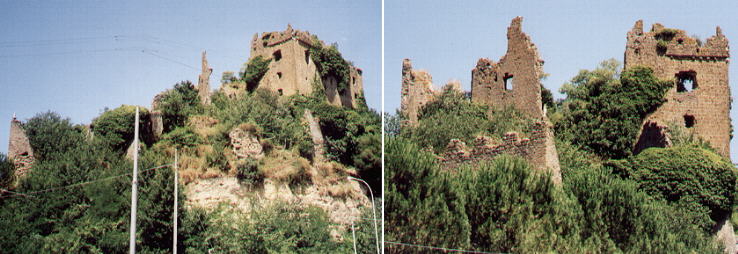 | ||
Civita Castellana is very near the point where Via Flaminia crosses the Tiber. In the late XVIth century Sistus V (1585-90) deviated the river and built a new bridge (Ponte Felice). This made useless the little castle which protected the old crossing point.
From Civitavecchia to Civita Castellana - other pages:
Civitavecchia, Allumiere and Tolfa
Oriolo Romano and Caprarola
Sutri and Monterosi
Nepi and Castel Sant' Elia
some other walks:
Walks with Ferdinand Gregorovius in the Roman countryside
In and about Viterbo
A walk to Porta Furba
Via Appia Antica from Cecilia Metella to Torre in Selci
Via Appia Antica from Torre in Selci to Frattocchie
See my Home Page on Baroque Rome or my Home Page on Rome in the footsteps of an XVIIIth century traveller
All images © 1999 - 2003 by Roberto Piperno. Write to romapip@quipo.it
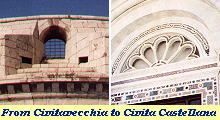 Civita Castellana
Civita Castellana